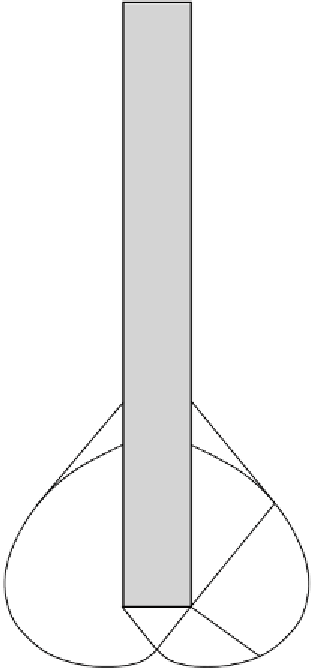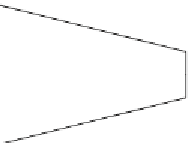Geoscience Reference
In-Depth Information
= r
1
e
tan
= B
e
ta
n
/
2sin(¼
), while the principal stresses rotate. At point 2
the soil reaction to the loading
Q
is deflected into a passive state with maximum
horizontal stress and in point 4 back into an active state with a maximum vertical
stress, which makes equilibrium with the local vertical weight:
- ½
(
H -
D
4
). From point 4 to 5 two different situations are sketched. Point 5a refers to a
continuation of the spiral with in the plastic zone a positive shaft friction, and point
5b refers to a Rankine stress state with no shaft friction.
v
4
= q
4
=
Q
e
s
5
c
r
DC
1
05
*
5
s
B
4
c
DC
1
H - D
4
r
q
4
04
*
4
s
DC
1
c
3
5
b
5
a
r
03
q
4
*
3
D
b
4
1
s
D
a
c
D
4
s
r
DC
1
q
1
3
1
01
D
1
r
*
1
2
(a) failure mechanism at the pile toe (b) Mohr circles along slip line s
Figure 12.3 Ultimate end bearing capacity Q
e
of a pile (drawn for
= 15
o
)
The plastic zone shows that the soil, which plays a role in the bearing capacity,
extends below the pile toe by
D
1
= B
cos
e
(¼ + ½)tan
/
2sin(¼
- ½
)
and above the
pile toe with
D
a
= Be
(1¼ - ½)tan
/
2sin(¼
- ½
) (or even higher in case of
D
b
). For
<
30
o
the corresponding depth ranges are 0.71
B < D
1
<
1.59
B
and
0.71
B < D
a
<
8.30
B
.
values of 0
<

































































































































































































Search WWH ::

Custom Search